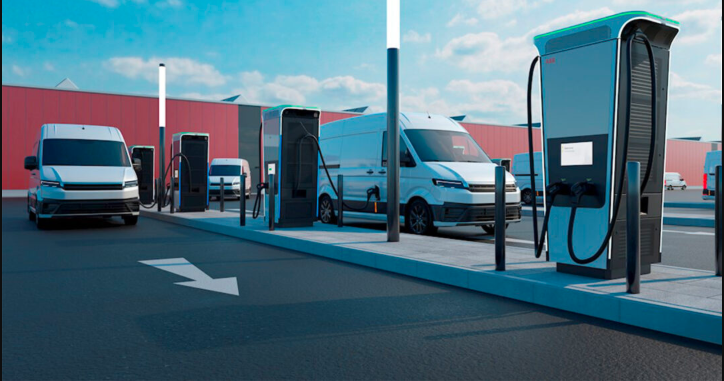Title: dc ev charging stations – Powering the Future of Electric Mobility

The global transition toward electric vehicles (EVs) is no longer a distant vision—it’s a fast-accelerating movement reshaping how we drive, fuel, and think about transportation. Central to this revolution is the infrastructure that keeps EVs charged and on the move. Among all types of charging solutions, dc ev charging stations stand out as a game-changer for long-range travel, commercial logistics, and high-speed urban mobility.
This article explores everything you need to know about dc ev charging stations, including their functionality, advantages, challenges, market trends, and how they contribute to a more sustainable future.
Understanding dc ev charging stations
dc ev charging stations are high-powered units that deliver direct current (DC) electricity directly to an electric vehicle’s battery. This bypass significantly speeds up the charging process, making it ideal for busy drivers and fleet operators.
While AC Level 1 and Level 2 chargers are suited for overnight or workplace charging, dc ev charging stations are perfect for public infrastructure, highway stops, and commercial depots where rapid energy replenishment is essential.
How dc ev charging stations Work
Electric vehicles typically use alternating current (AC) when charged at home or via Level 2 chargers. So, to fill the battery quickly, the AC needs to be converted into DC.
dc ev charging stations perform this conversion externally—before the electricity reaches the car. These stations deliver the converted current directly into the battery, dramatically reducing charging time.
Modern dc stations use connectors like:
- CCS (Combined Charging System)
- CHAdeMO
- Tesla Supercharger (proprietary but increasingly compatible)
The higher the kW rating, the faster the charging—though this also depends on the vehicle’s compatibility..
See also: Concierge Services for Personalized and Attentive Service
Why dc ev charging stations Matter
⚡ Speed
The most notable advantage of dc ev charging stations is their ability to rapidly charge electric vehicles. Most EVs can charge from 10% to 80% within 20 to 40 minutes, depending on the battery and charger capacity. This minimizes downtime and offers convenience similar to traditional refueling.
🔋 Range Confidence
Fast-charging stations reduce “range anxiety”—a common concern among EV drivers. With more dc ev charging stations being installed along highways and major routes, users can travel longer distances without fearing they’ll run out of power.
🚚 Support for Fleets
Logistics companies and public transport providers depend heavily on uptime. dc ev charging stations allow electric buses, vans, and trucks to stay in rotation with minimal charging breaks.
🏙️ Urban Mobility
As cities grow smarter and greener, rapid chargers installed in malls, parking lots, and office complexes allow EV drivers to “top off” their charge while working or shopping.
Use Cases of dc ev charging stations
- Highway Corridors
- Key locations for intercity travel and long-range commutes.
- Strategic placement every 50–100 kilometers supports seamless EV travel.
- Public Parking
- Shopping malls, stadiums, and airports are deploying dc ev charging stations to accommodate drivers during shorter visits.
- Commercial Hubs
- Warehouses, logistic parks, and transportation terminals use high-capacity DC chargers to keep fleets active and efficient.
- Residential Complexes
- Luxury apartments and modern housing societies are integrating rapid chargers for tenants with fast-paced lifestyles.
Challenges in Deploying dc ev charging stations
While dc ev charging stations offer immense benefits, there are a few hurdles:
💰 High Capital Costs
Installation of a DC charging station can cost between $30,000 to $200,000 depending on power level, site preparation, permits, and utility upgrades.
⚙️ Infrastructure Readiness
Many urban grids are not yet equipped to handle the massive electrical loads required by high-speed chargers, necessitating investment in power supply systems.
🧠 Technical Maintenance
DC chargers include advanced electronics and software systems. They require regular monitoring, calibration, and occasional replacement of components.
🌍 Standardization Issues
Connector standards still vary globally. CCS and CHAdeMO are most common, but lack of uniformity can confuse users or limit cross-compatibility.
Innovations Shaping the Future of dc ev charging stations
🔄 Bidirectional Charging (V2G)
Future-ready dc ev charging stations will support Vehicle-to-Grid (V2G) functionality, where cars can return excess electricity to the grid during peak demand.
☀️ Renewable Energy Integration
This synergy reduces operational costs and enhances environmental benefits.
📱 Smart Charging Systems
AI-powered analytics and IoT-enabled dashboards now help operators monitor usage, control energy loads, and schedule maintenance with minimal manual intervention.
🔋 Battery Buffering
Battery-integrated dc ev charging stations use stored energy to provide high-speed charging even in areas with limited grid capacity.
Government Support and Policy Trends
Governments worldwide are aggressively promoting dc ev charging stations through:
- Subsidies & Grants: Helping reduce the high upfront cost for operators.
- Public-Private Partnerships: Encouraging corporations to co-invest in infrastructure.
- Zoning Laws: Mandating charging points in new buildings and public spaces.
- Emission Norms: Incentivizing fleet conversions from diesel to electric.
For example, the U.S. NEVI program and the EU’s Green Deal are allocating billions of dollars to expand DC charging coverage across major routes.
Conclusion
dc ev charging stations are more than a convenience—they are a vital part of the electric vehicle ecosystem. They allow for quicker turnarounds, support long-distance travel, and are key to electrifying commercial transport sectors.
As technology matures and governments double down on carbon reduction goals, the role of dc ev charging stations will only expand. Investing in this infrastructure is not just environmentally sound—it’s economically strategic for a sustainable future.




